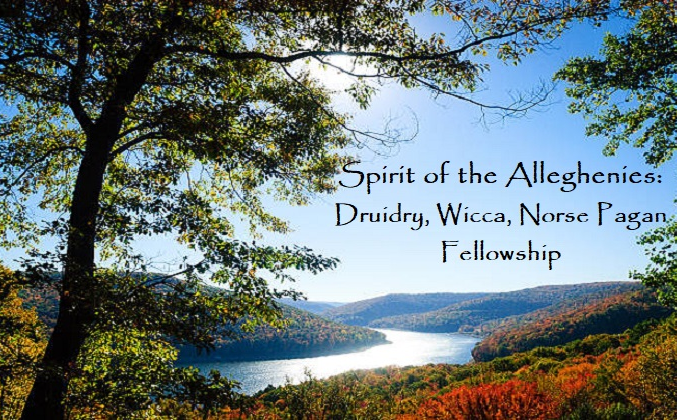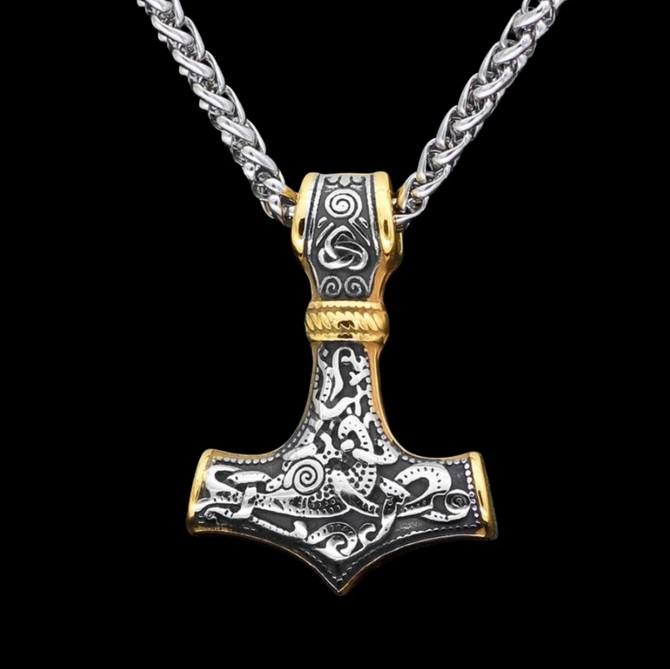To many Norse Pagans, the pendant of Mjölnir is more than just jewelry; it’s a symbol of protection and honor; a physical sign of our strength, a beacon of power. It acts as a conduit, to the Mighty Thor, wielder of Mjölnir, protector of Midgard, and to the other Gods within our pantheon, inviting the virtues, strength, and very spirit of Thor into us. We honor the sacred, ancient traditions and values as we know them, as we believe, and as we embody them. This is a sacred object that carries a practical and symbolic significance to our past.
Mjölnir (pronounced Miol-neer) loosely translates to “crusher” or “grinder” in Old Norse. This denotes the awesome destructive abilities Mjölnir is known to possess; an invisible force that can shatter mountains, slay giants, and command the very power of the cosmos. Mjölnir carries a presence of fear and respect, from allies and foes alike.
Creation
Mjölnir was one of 3 magnificent pieces created by the Dwarven brothers, Sindri and Brokkr, through the trickery of Loki, the God of Mischief and Trickery. Loki cut off the golden locks of Sif, Thor’s wife and, of course, incited Thor’s wrath. Loki, looking to avoid being smashed to bits, convinced Thor to let him go and promised to replace her golden locks. Thor agrees, and Loki travels to the land where the Dwarves lived, Svartalfheim.
The Dwarves were well known for being skilled at many forms of craftworks. Along with crafting new golden locks of hair for Sif, as promised, Loki managed to trick the Dwarves into crafting many other treasures. Notably, one of these treasures was Mjölnir.
Mjölnir embodies raw power, marking it as a symbol of protection, strength, and victory; a tool used for cosmic balance between worlds. Even the Mighty Thor needed the aid of magical items to wield such power. This became a symbol of the warrior spirit.
Functions
Mjölnir served Thor as a weapon of war, but also as a ceremonial tool, used to hallow events and bless births, weddings, and funerals as well. During the rise of Christianity in Northern Europe, Mjölnir took on addition importance to Norse Pagan practitioners. It reflected cultural identity. As the Crucifixes was adorned by Christians, followers of Forn Sidr, The Old Way, began to wear Mjölnir pendants. Many compared the struggle between Christianity and Forn Sidr to the many conflicts between the Giants and Thor. The Christians were aligned with the Giants as chaos, looking to destroy the old ways, the culture. Those that fought against this viewed themselves like Thor and his mighty hammer Mjölnir.
Donning the Mjölnir was like possessing a shield of invulnerability. This was protection from harmful forces, and a source of strength to face one’s adversities head-on. This symbol was a talisman, of sorts, for travelers on dangerous journeys, a symbol of indomitable power for warriors on the field of battle.
Many wear the Mjölnir today to tie themselves to the old traditions, as we view them in our own perspectives. As Thor preserved the order of the universe against many threats, we adorn Mjölnir to showcase and preserve our practices, values, and beliefs. We seek to honor our roots and seek a (re)connection with the Earth and the spirits. Our Mjölnir serve as a link to this end, to the ancient wisdom left for us.
Mjölnir is an essential part of the Norse traditions. More than just a weapon, it’s a portal into the sagas, myths, traditions and values of Norse mythology and culture, and to the strength and resilience of the human spirit, and the power of the Gods’ themselves.


